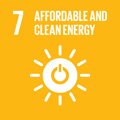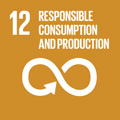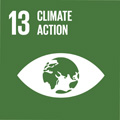- Docente: Loris Giorgini
- Credits: 6
- SSD: CHIM/04
- Language: Italian
- Teaching Mode: Traditional lectures
- Campus: Bologna
- Corso: Second cycle degree programme (LM) in Teaching and Communication of Natural Sciences (cod. 5704)
Learning outcomes
The course aims to illustrate the history and development of polymeric materials widely used in everyday life and to present future prospects, critical issues and ways of communicating them. At the end of the course, the student acquires the necessary skills to communicate: 1) the discovery and evolution of polymeric materials; 2) the type and use of the main plastic materials in the various application fields; 3) current recycling methods and processes; 4) reference legislation; 5) possible future prospects. Furthermore, particular emphasis will be given to: 1) evolution of the market and technologies; 2) design for recycling; 3) design for sustainability; 4) innovative materials; 5) current and future use of recycled materials.
Course contents
The course aims to illustrate the history and development of polymeric materials widely used in everyday life and to present future prospects, critical issues and ways of communicating them.
1) Introduction, purpose of the course and polymer market;
2) the discovery and evolution of polymeric materials;
3) the type and use of the main plastic materials in the various application fields;
4) evolution of the market and technologies;
5) innovative materials;
6) current recycling methods and processes;
7) current and future use of recycled materials;
8) design for sustainability;
9) Biopolymers and perspectives;
10) possible future prospects;
Case studies and group work on dissemination (in match race)
Insights: speeches by industry experts
Readings/Bibliography
H. Ulrich - Introduction to Industrial Polymers, Hanser Publ., 1993, Munich
The Chemical Industry, A. Heaton editor, Blackie Acad., London
Handbook of plastics Recycling, Ed. F. La Mantia, Rapra Technology Publisher, Shawbury, 2002
newspapers and dissemination articles
Teaching methods
The teaching activities are performed through lessons, training by written questions, visits to research and industrial laboratories.
Assessment methods
The learning assessment is performed through a final oral examination by which the achievement of a sufficient threshold of knowledges and abilities by the candidate is ascertained and evaluated.
Teaching tools
The contents of the course are presented by pc videoprojections. Printed copies of the presented topics are made available to the students.
Office hours
See the website of Loris Giorgini
SDGs




This teaching activity contributes to the achievement of the Sustainable Development Goals of the UN 2030 Agenda.
